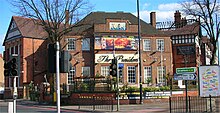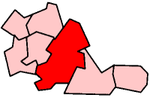Balsall Heath is an inner-city area of Birmingham, West Midlands, England. It has a diverse cultural mix of people and is the location of the Balti Triangle.
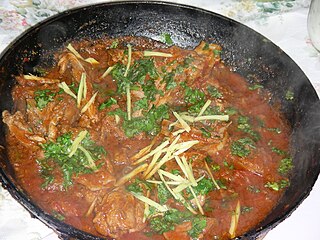
A balti or bāltī gosht is a type of curry served in a thin, pressed-steel wok called a "balti bowl". The name may have come from the metal dish in which the curry is cooked, rather than from any specific ingredient or cooking technique. Balti curries are cooked quickly using vegetable oil rather than ghee, over high heat in the manner of a stir-fry, and any meat is used off the bone. This combination differs sharply from a traditional one-pot Indian curry which is simmered slowly all day. Balti sauce is based on garlic and onions, with turmeric and garam masala, among other spices.
Sparkbrook is an inner-city area in south-east Birmingham, England. It is one of the four wards forming the Hall Green formal district within Birmingham City Council.

Acocks Green is a suburban area and ward of southeast Birmingham, England. It is named after the Acock family, who built a large house there in 1370. It is occasionally spelled "Acock's Green". It has frequently been noted on lists of unusual place names.

Tividale is a district of the Metropolitan Borough of Sandwell, West Midlands.
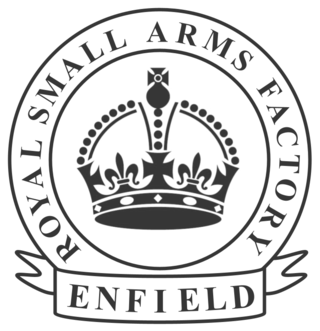
The Royal Small Arms Factory (RSAF), also known by the metonym Enfield, was a UK government-owned rifle factory in Enfield, adjoining the Lee Navigation in the Lea Valley. Some parts were in Waltham Abbey. The factory produced British military rifles, muskets and swords from 1816. It closed in 1988, but some of its work was transferred to other sites.

Birmingham, Sparkbrook and Small Heath was a parliamentary constituency represented in the House of Commons of the Parliament of the United Kingdom. It elected one Member of Parliament (MP) by the first-past-the-post system of election. The constituency was notable for having the largest percentage of Muslim voters of any UK constituency at 48.8%.

Lozells is a loosely defined inner-city area in West Birmingham, England. It is centred on Lozells Road, and is known for its multi-racial population. It is part of the ward of Lozells and East Handsworth and lies between the districts of Handsworth and Aston.

Small Heath is an inner-city area in south-east Birmingham, West Midlands, England situated on and around the Coventry Road about 2 miles (3 km) from the city centre.
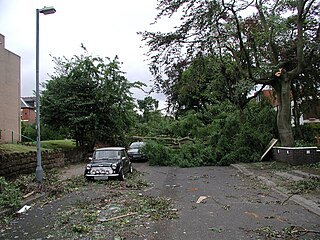
The 2005 Birmingham tornado was one of the strongest tornadoes recorded in Great Britain in nearly 30 years, occurring on 28 July 2005 in the suburbs of Birmingham. It formed on a day when thunderstorms were expected to develop across the Midlands and eastern England. The tornado struck at approximately 14:37 BST in the Sparkbrook area and also affected King's Heath, Moseley and Balsall Heath as it carved a 7 mile long path through the city.
Springfield is a ward in south east Birmingham, England, created in 2004 from much of the old Sparkhill ward. It is a part of the formal district of Hall Green.

William Henry Bidlake MA, FRIBA was a British architect, a leading figure of the Arts and Crafts movement in Birmingham and Director of the School of Architecture at Birmingham School of Art from 1919 until 1924.

Holland William Hobbiss, was an English architect in the Birmingham area. He traded under the names Holland W. Hobbiss and Partners and Holland W. Hobbiss and M. A. H. Hobbiss.

Hay Mills is an area of east Birmingham, England straddling the A45 Coventry Road about 3 miles (5 km) south east of the city centre. North of the Coventry Road is mainly residential whereas the south is mixed residential and commercial. The area was subsumed into Birmingham in 1911.

Gilbertstone is a residential suburban area straddling the border of Yardley and South Yardley in Birmingham, West Midlands.

Warstock is a district within the city of Birmingham, UK, in the southernmost suburbs roughly 1 km east of the A435 and within the ward of Highter's Heath. The area lies within the B14 postcode and is contiguous with Yardley Wood to the north-east, Solihull Lodge to the south-east and Highter's Heath to the south-west. Kings Heath lies to the north-west.
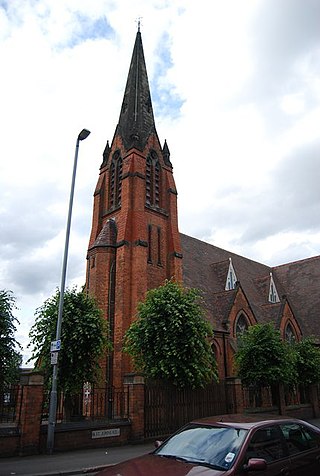
St John's Church is an Anglican church in Sparkhill Birmingham.

The Antelope, now housing a restaurant called Hajee's Spices, is a grade II listed building on the Stratford Road in Sparkhill, Birmingham, England. It opened as a public house called The Antelope in 1924.





